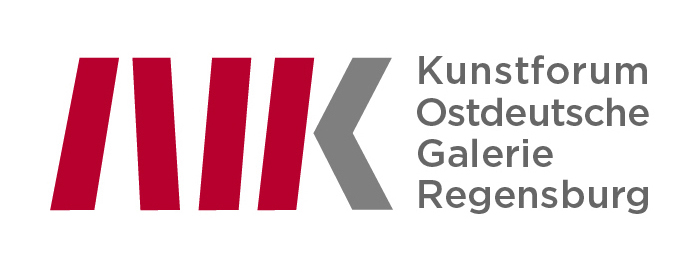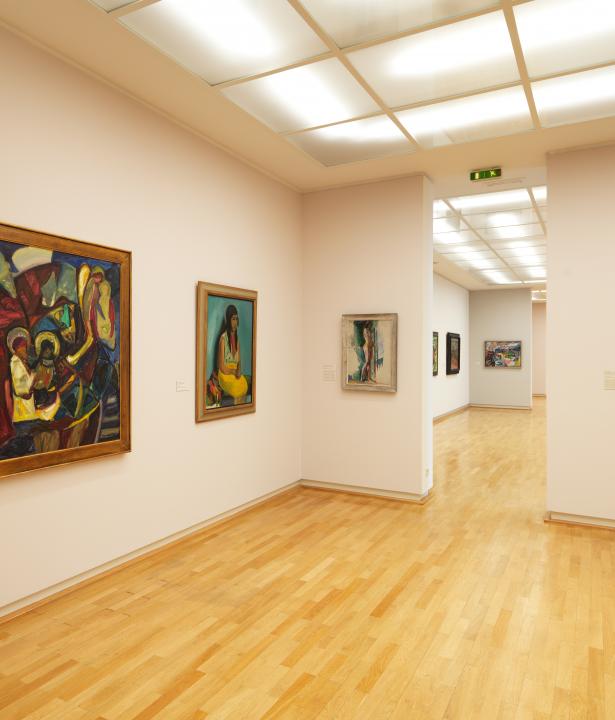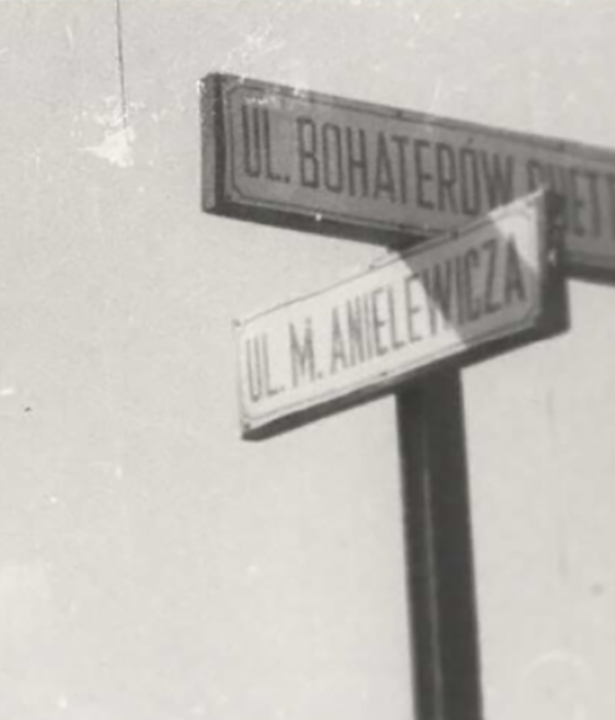Travel. Discover. Collect. These three words encapsulate the motivation behind Hans-Peter Riese’s collection, which brings together art from Eastern and Western Europe. A central focus of the the exhibition is concrete art from the former Czechoslovakia, dating from 1960s until the 1980s, while photographs by Barbara Klemm provide a contemporary context.
Text
Thirty years ago, the Iron Curtain dividing Europe into East and West fell, bringing an end to an era of political division with major social and economic implications. Hans-Peter Riese, a West-German journalist who journeyed throughout Eastern Europe, was one of the ambassadors connecting these two worlds. On his travels, he became friends with many artists and, together with his journalist wife Michaela (1943–2000), started an art collection.
Since 2008, the Michaela Riese Foundation has been housed at the Kunstforum Ostdeutsche Galerie (KOG) in Regensburg. The collection continues to grow, and currently contains around 270 works of Czech, Russian, Polish and German art. With the exhibition “reisen. entdecken. sammeln.” ("travel. discover. collect."), the museum is commemorating the twentieth anniversary of Michaela Riese’s passing.
The exhibition begins in the large main gallery and recalls Hans-Peter Riese’s time as a correspondent in Eastern Europe. His reportages for the daily Frankfurter Allgemeine Zeitung are flanked by works of his photographer colleague at the newspaper, Barbara Klemm. Further galleries offer monographic presentations of art by four Czech artists. The focus here is on a selection of the most recently donated, which entered the collection in 2019. Concurrently, a second venue at Regensburg University presents the art books of Hans-Peter Riese. He recently donated his holdings on Eastern European art to the university’s library. The books are now available for research purposes. The presentation in the “Schaufenster”, the exhibition space in the foyer of the library, is supplemented by further photographs by Barbara Klemm as well as greeting cards featuring the artists’ works, correspondence, and a selection of art books. The collection as a whole attests to Riese’s close friendships with artists.
Since 2008, the Michaela Riese Foundation has been housed at the Kunstforum Ostdeutsche Galerie (KOG) in Regensburg. The collection continues to grow, and currently contains around 270 works of Czech, Russian, Polish and German art. With the exhibition “reisen. entdecken. sammeln.” ("travel. discover. collect."), the museum is commemorating the twentieth anniversary of Michaela Riese’s passing.
The exhibition begins in the large main gallery and recalls Hans-Peter Riese’s time as a correspondent in Eastern Europe. His reportages for the daily Frankfurter Allgemeine Zeitung are flanked by works of his photographer colleague at the newspaper, Barbara Klemm. Further galleries offer monographic presentations of art by four Czech artists. The focus here is on a selection of the most recently donated, which entered the collection in 2019. Concurrently, a second venue at Regensburg University presents the art books of Hans-Peter Riese. He recently donated his holdings on Eastern European art to the university’s library. The books are now available for research purposes. The presentation in the “Schaufenster”, the exhibition space in the foyer of the library, is supplemented by further photographs by Barbara Klemm as well as greeting cards featuring the artists’ works, correspondence, and a selection of art books. The collection as a whole attests to Riese’s close friendships with artists.

Installation view of the exhibition 'travel. discover. collect'. Studio Zink Fotografen / XXX, Free access - no reuse
Installation view of the exhibition 'travel. discover. collect'. Studio Zink Fotografen / XXX, Free access - no reuse
Externe Links
External Image









